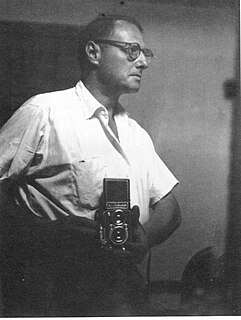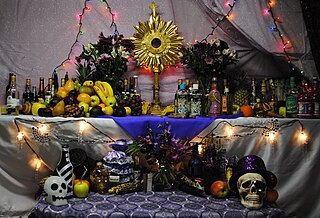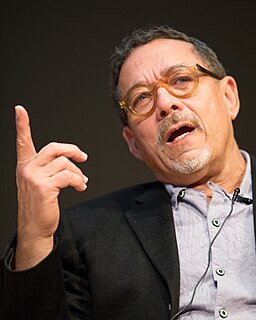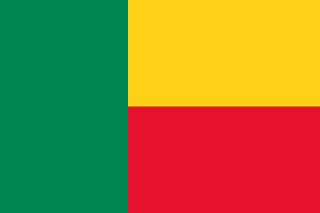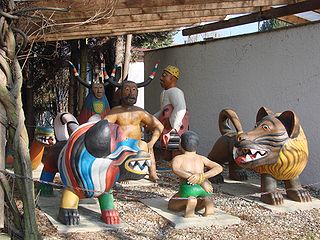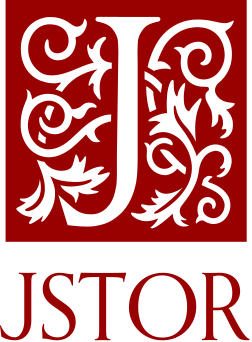The International Festival of Vodun Arts and Cultures, also known as the Ouidah Festival, was first held in Ouidah, Benin in February 1993, sponsored by UNESCO and the government of Benin. It celebrated the transatlantic Vodun religion, and was attended by priest and priestesses from Haiti, Cuba, Trinidad and Tobago, Brazil and the United States, as well as by government officials and tourists from Europe and the Americas. [1] The festival was sponsored by the newly elected president of Benin, Nicéphore Soglo, who wanted to rebuild the connection with the Americas and celebrate the restoration of freedom of religion with the return to democracy. [2] Artists from Benin, Haiti, Brazil and Cuba were given commissions to make sculptures and paintings related to Vodun and its variants in Africa and the African diaspora. [1]

Ouidah or Whydah, formerly the Kingdom of Whydah, is a city on the coast of the Republic of Benin. The commune covers an area of 364 km2 (141 sq mi) and as of 2002 had a population of 76,555 people.

The United Nations Educational, Scientific and Cultural Organization is a specialized agency of the United Nations (UN) based in Paris. Its declared purpose is to contribute to peace and security by promoting international collaboration through educational, scientific, and cultural reforms in order to increase universal respect for justice, the rule of law, and human rights along with fundamental freedom proclaimed in the United Nations Charter. It is the successor of the League of Nations' International Committee on Intellectual Cooperation.
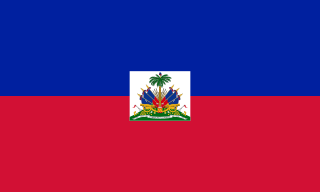
Haiti, officially the Republic of Haiti and formerly called Hayti, is a country located on the island of Hispaniola, east of Cuba in the Greater Antilles archipelago of the Caribbean Sea. It occupies the western three-eighths of the island, which it shares with the Dominican Republic. Haiti is 27,750 square kilometres (10,714 sq mi) in size and has an estimated 10.8 million people, making it the most populous country in the Caribbean Community (CARICOM) and the second-most populous country in the Caribbean as a whole.
The festival was mainly commercial in nature, aiming to attract tourists and gain attention from the international art market. However, Vodun art can still be efficacious when produced for sale, and the Vodun spirits were propitiated at the start of the festival. [3] The festival acknowledged the role of the Beninese in the slave trade, and was meant to serve a healing role and a welcoming home of the people of the African diaspora. It also tried counter the view of the Yoruba people and Yoruba religion as the main cultural origin of the diaspora, and affirm the central role of the Fon people and Vodun religion. [4] Some of the art commissioned for the festival is displayed at sites in the city, including work by the Benin artists Cyprien Tokoudagba, Calixte Dakpogan, Theodore Dakpogan, Simonet Biokou, Dominique Kouas, and Yves Apollinaire Pede, and work of the African Diaspora artists Edouard Duval-Carrié (Haiti), José Claudio (Brazil) and Manuel Mendive (Cuba). [3]

Vodun art is associated with the West African Vodun religion of Nigeria, Benin, Togo and Ghana. The term is sometimes used more generally for art associated with related religions of West and Central Africa and of the African diaspora in Brazil, the Caribbean and the United States. Art forms include bocio, carved wooden statues that represent supernatural beings and may be activated through various ritual steps, and Asen, metal objects that attract spirits of the dead or other spirits and give them a temporary resting place. Vodun is assimilative, and has absorbed concepts and images from other parts of Africa, India, Europe and the Americas. Chromolithographs representing Indian deities have become identified with traditional Vodun deities and used as the basis for murals in Vodun temples. The Ouidah '92 festival, held in Benin in 1993, celebrated the removal of restrictions on Vodun in that country and began a revival of Vodun art.

The Yorùbá people are an African ethnic group that inhabits western Africa. The Yoruba constitute about 44 million people in total. Majority of this population is from Nigeria, where the Yorùbá make up 21% of the country's population, according to the CIA World Factbook, making them one of the largest ethnic groups in Africa. Most Yoruba people speak the Yoruba language, which is tonal, and is the language with the largest number of native speakers.

The Yoruba religion comprises the traditional religious and spiritual concepts and practice of the Yoruba people. Its homeland is in present-day Southwestern Nigeria and the adjoining parts of Benin and Togo, commonly known as Yorubaland. It is similar to the Vodun practiced by the neighboring Fon and Ewe people to the west and to the religion of the Edo people to the east. Yoruba religion is the basis for a number of religions in the New World, notably Santería, Umbanda, Trinidad Orisha and Candomblé. Yoruba religious beliefs are part of Itan, the total complex of songs, histories, stories, and other cultural concepts which make up the Yoruba society.




